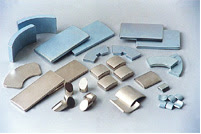To mechanical methods of
work holding magnetic chucks are a viable alternative and in a variety of
metalworking industries are becoming more common.
In a few varieties and forms, these devices like Industrial Magnet are
available, so they are compatible with an assortment of metal pieces. For
traditionalists, it can be quite unusual to work without mechanical clamping or
holding during metal shaping or milling, but a professional’s job can become
much easier with the removal of physical clamping.
These devices appear like a circular or rectangular box with a
flat surface on top and either an on/off the switch or key insert on the side.
To increase the flux (the strength of the device’s pull) along the surface of
the device, inside the work holder, is present a series of inserts that are
arranged.
In a few different designs, these work holders are available,
including permanent, electrically activated, and electric-permanent magnets.
For light material handling equipment that comes with permanent inserts are
popular choices and require no power to function.
During operation, in the side of the device, a key is slid into an insert and turned to align the inserts with conductive material built into the top of the device. In brief, it functions like an on/off setting.
Advantages of magnetic chucks
While shaping, turning, grinding, or drilling metal working
professionals constantly need some sort of work holding device like Magnetic Chuck so that their
work can be done precisely. Unlike mechanical clamping these devices, provide a
constant level of gripping power with no variation.
For at all times The device power can be accounted and it is either on or off. This highly improves safety. Along the entire body of the ferrous piece, these tools also provide an equal amount of pressure, so there is less chance of causing damage to the item. During milling full support also reduces physical feedback, allowing for faster and more precise cutting or shaping.



